Raul Queiroz Feitosa
Combining recurrent and residual learning for deforestation monitoring using multitemporal SAR images
Oct 09, 2023Abstract:With its vast expanse, exceeding that of Western Europe by twice, the Amazon rainforest stands as the largest forest of the Earth, holding immense importance in global climate regulation. Yet, deforestation detection from remote sensing data in this region poses a critical challenge, often hindered by the persistent cloud cover that obscures optical satellite data for much of the year. Addressing this need, this paper proposes three deep-learning models tailored for deforestation monitoring, utilizing SAR (Synthetic Aperture Radar) multitemporal data moved by its independence on atmospheric conditions. Specifically, the study proposes three novel recurrent fully convolutional network architectures-namely, RRCNN-1, RRCNN-2, and RRCNN-3, crafted to enhance the accuracy of deforestation detection. Additionally, this research explores replacing a bitemporal with multitemporal SAR sequences, motivated by the hypothesis that deforestation signs quickly fade in SAR images over time. A comprehensive assessment of the proposed approaches was conducted using a Sentinel-1 multitemporal sequence from a sample site in the Brazilian rainforest. The experimental analysis confirmed that analyzing a sequence of SAR images over an observation period can reveal deforestation spots undetectable in a pair of images. Notably, experimental results underscored the superiority of the multitemporal approach, yielding approximately a five percent enhancement in F1-Score across all tested network architectures. Particularly the RRCNN-1 achieved the highest accuracy and also boasted half the processing time of its closest counterpart.
Multi-task fully convolutional network for tree species mapping in dense forests using small training hyperspectral data
Jun 01, 2021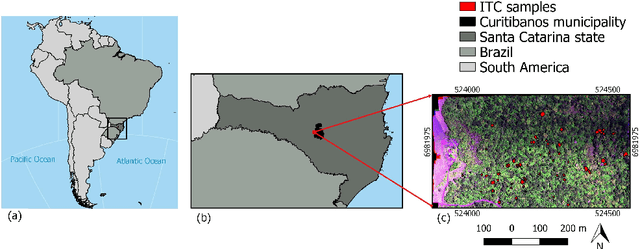
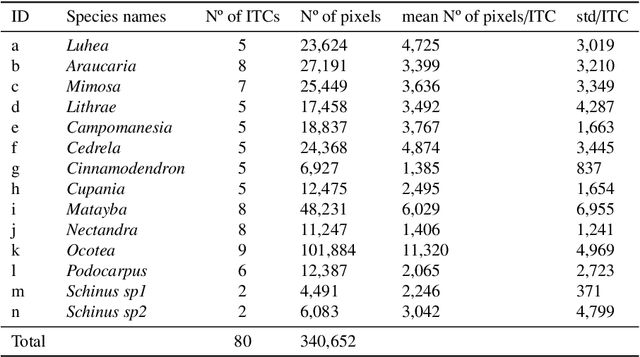


Abstract:This work proposes a multi-task fully convolutional architecture for tree species mapping in dense forests from sparse and scarce polygon-level annotations using hyperspectral UAV-borne data. Our model implements a partial loss function that enables dense tree semantic labeling outcomes from non-dense training samples, and a distance regression complementary task that enforces tree crown boundary constraints and substantially improves the model performance. Our multi-task architecture uses a shared backbone network that learns common representations for both tasks and two task-specific decoders, one for the semantic segmentation output and one for the distance map regression. We report that introducing the complementary task boosts the semantic segmentation performance compared to the single-task counterpart in up to 10% reaching an overall F1 score of 87.5% and an overall accuracy of 85.9%, achieving state-of-art performance for tree species classification in tropical forests.
Automatic tracking of vessel-like structures from a single starting point
Jun 08, 2017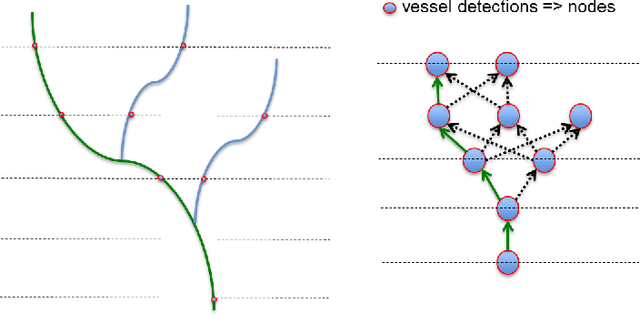

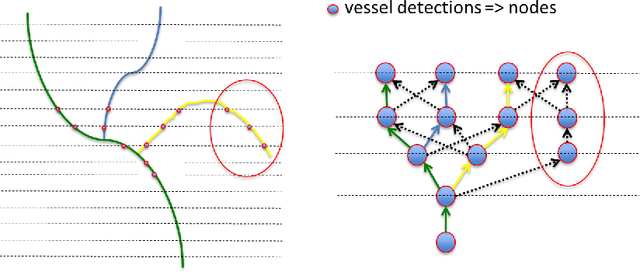
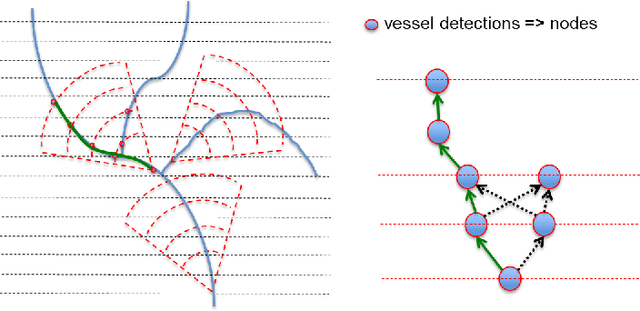
Abstract:The identification of vascular networks is an important topic in the medical image analysis community. While most methods focus on single vessel tracking, the few solutions that exist for tracking complete vascular networks are usually computationally intensive and require a lot of user interaction. In this paper we present a method to track full vascular networks iteratively using a single starting point. Our approach is based on a cloud of sampling points distributed over concentric spherical layers. We also proposed a vessel model and a metric of how well a sample point fits this model. Then, we implement the network tracking as a min-cost flow problem, and propose a novel optimization scheme to iteratively track the vessel structure by inherently handling bifurcations and paths. The method was tested using both synthetic and real images. On the 9 different data-sets of synthetic blood vessels, we achieved maximum accuracies of more than 98\%. We further use the synthetic data-set to analyse the sensibility of our method to parameter setting, showing the robustness of the proposed algorithm. For real images, we used coronary, carotid and pulmonary data to segment vascular structures and present the visual results. Still for real images, we present numerical and visual results for networks of nerve fibers in the olfactory system. Further visual results also show the potential of our approach for identifying vascular networks topologies. The presented method delivers good results for the several different datasets tested and have potential for segmenting vessel-like structures. Also, the topology information, inherently extracted, can be used for further analysis to computed aided diagnosis and surgical planning. Finally, the method's modular aspect holds potential for problem-oriented adjustments and improvements.
 Add to Chrome
Add to Chrome Add to Firefox
Add to Firefox Add to Edge
Add to Edge